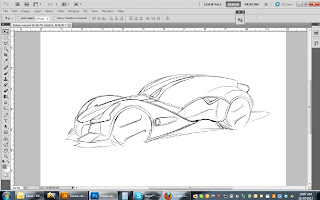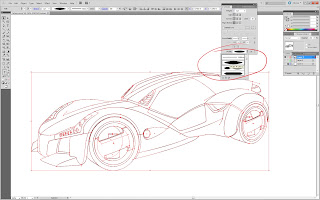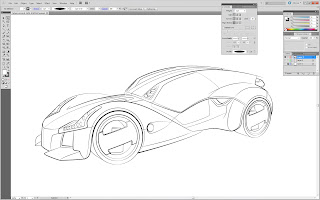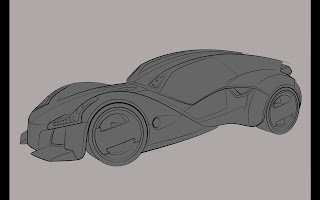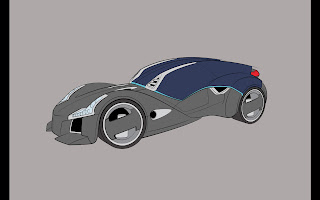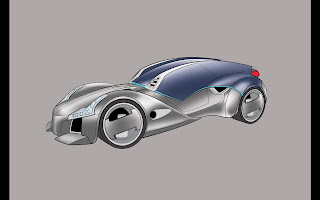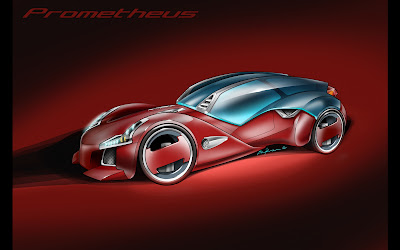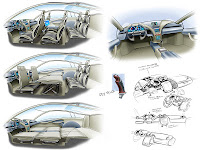It's refreshing and I think important to explore other product design avenues/subject matter once in awhile outside of your specialty. In terms of product/industrial design ultimately the basic design fundamentals apply, but you'll probably want to know your target audience and try to be familiar with trends, materials, technology, etc... in the specific industry.
This is my first attempt at a watch design. It's for another GrabCAD competition being held by WoodChip design. The results aren't in yet, but here's hoping. The judging is taking place now and you can view the competition and 100+ entries here: http://grabcad.com/challenges/creative-watch-design
The competition stated they'd like to see inspiration taken
from things like Formula 1 or WW2 bombers so I've gone with an Avro
Lancaster theme. There's 2 versions, the Lancaster MKX and the Lancaster Night Raid. Hope you enjoy.
Thanks for checking out my blog. In addition to my personal website I figured it's worthwhile to create a blog showing more up to date work. That being said, I'll probably post some old work once in a while too.
Monday, October 29, 2012
Saturday, October 27, 2012
Car Render Tutorial - Prometheus car (2012)
There's multiple Photoshop tutorials on the subject, so to offer something new I figured I'd show how I set up the line art using Adobe Illustrator and transferring it to Photoshop to render. Like any program Illustrator can take some practice, but I've found it incredibly useful for my field of work. Especially more technical drawings like setting up 4 view shots for creating CAD models of your vehicles. So hope you enjoy.
 |
| Here's other examples to show similar results. This is my sushi taillight supercar and below is a convertible version of the Kestrel. These probably took 2/3 the time of Prometheus. Simpler linework and you can see how clean it can look. |
Wednesday, October 24, 2012
Epic Torq Roadster - 2012
Here's some of my most recent work. I was privileged to join the Torq project as a co-designer with Jason
Hill. I began where Jason left off taking a bit of a different design
direction. It was communicated from Epic that it was to have faceted
aggressive forms and to keep true to the flavour of the original design. I did much of the surface ideation and completed the CAD modeling and these renders for Epic's marketing purposes. Check out more info on the trike here: www.evepic.com/on-road
I've just wrapped up the design for the center console (not shown in these images). Stay tuned to see the final reveal with a completed interior at this years SEMA show. I'll post more pics (some actual photos) at a later date. Hope you enjoy it.
I've just wrapped up the design for the center console (not shown in these images). Stay tuned to see the final reveal with a completed interior at this years SEMA show. I'll post more pics (some actual photos) at a later date. Hope you enjoy it.
Tuesday, October 23, 2012
VPV Masters project - 2008
Here's my final Masters project while studying at Coventry University from 2008. This is the VPV (Versatile Performance Vehicle). I was asking the question, 'Can the SUV Survive Until 2030 in North America?" ...and here was my results.
Biffard Motorcycle ideation - 2010
My posts will be a bit random until I'm updating it with the most recent works. Here's some electric motorcycle sketching I did back in 2010. I haven't done a lot of bikes, but it was a fun exercise. This was done for Ryan Biffard who I believe now works for Brammo or Zero Motorcycles.
Monday, October 22, 2012
GrabCAD supercar design challenge - Tosa Supercar 2012
...and I figure I'll add another one that's more current to get some content on here. I took first place in this GrabCAD competition. It was the 500 Group’s Supercar body challenge. They gave us a set chassis, wheelbase, greenhouse, roll cage, engine, etc... to design a body around. I was honored to place 1st and here's a couple shots of the car.
Subscribe to:
Posts (Atom)











